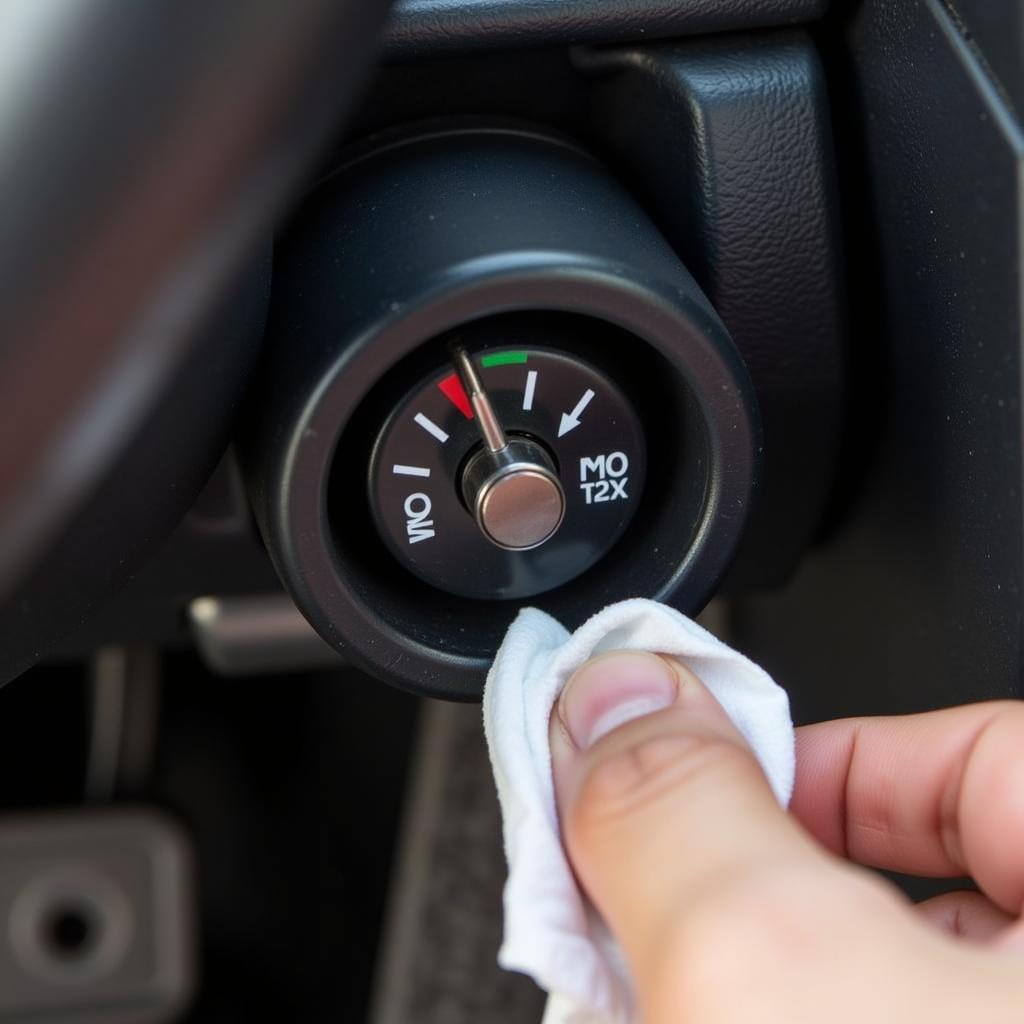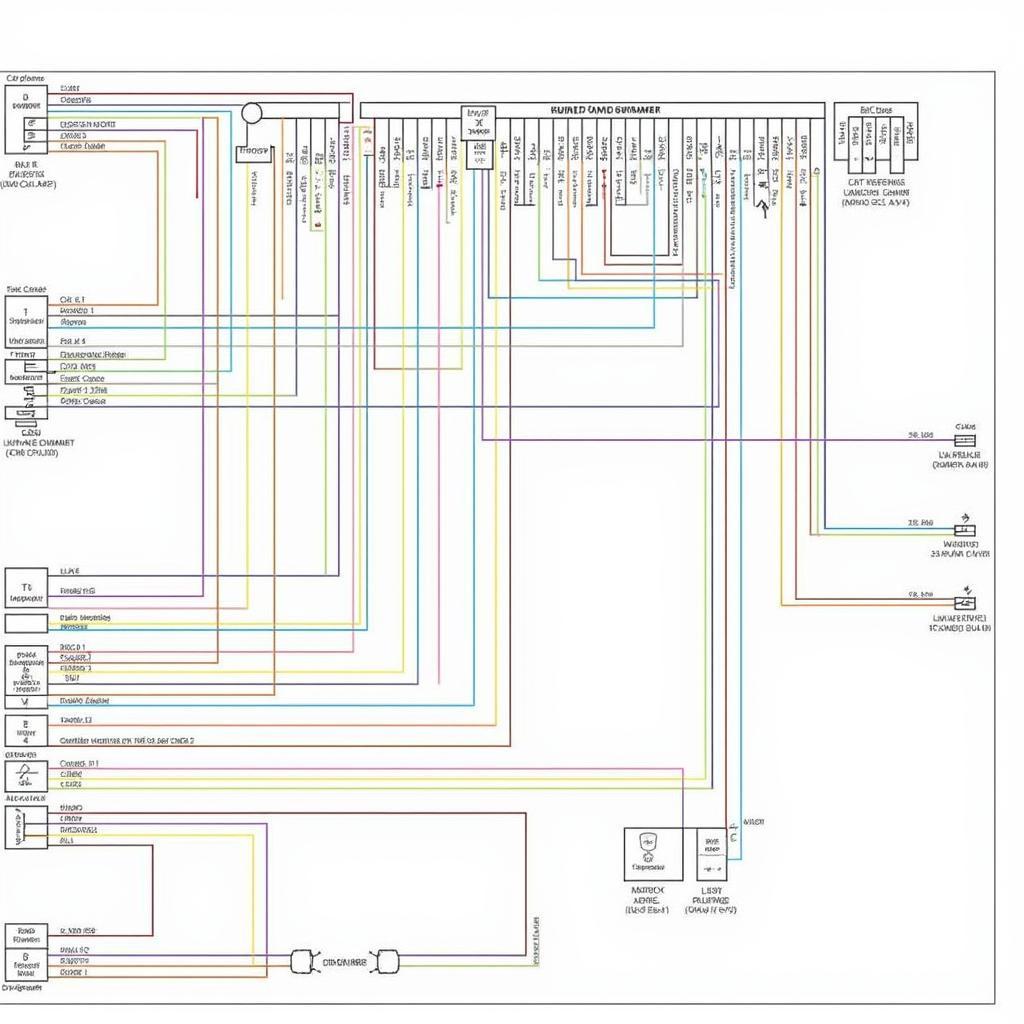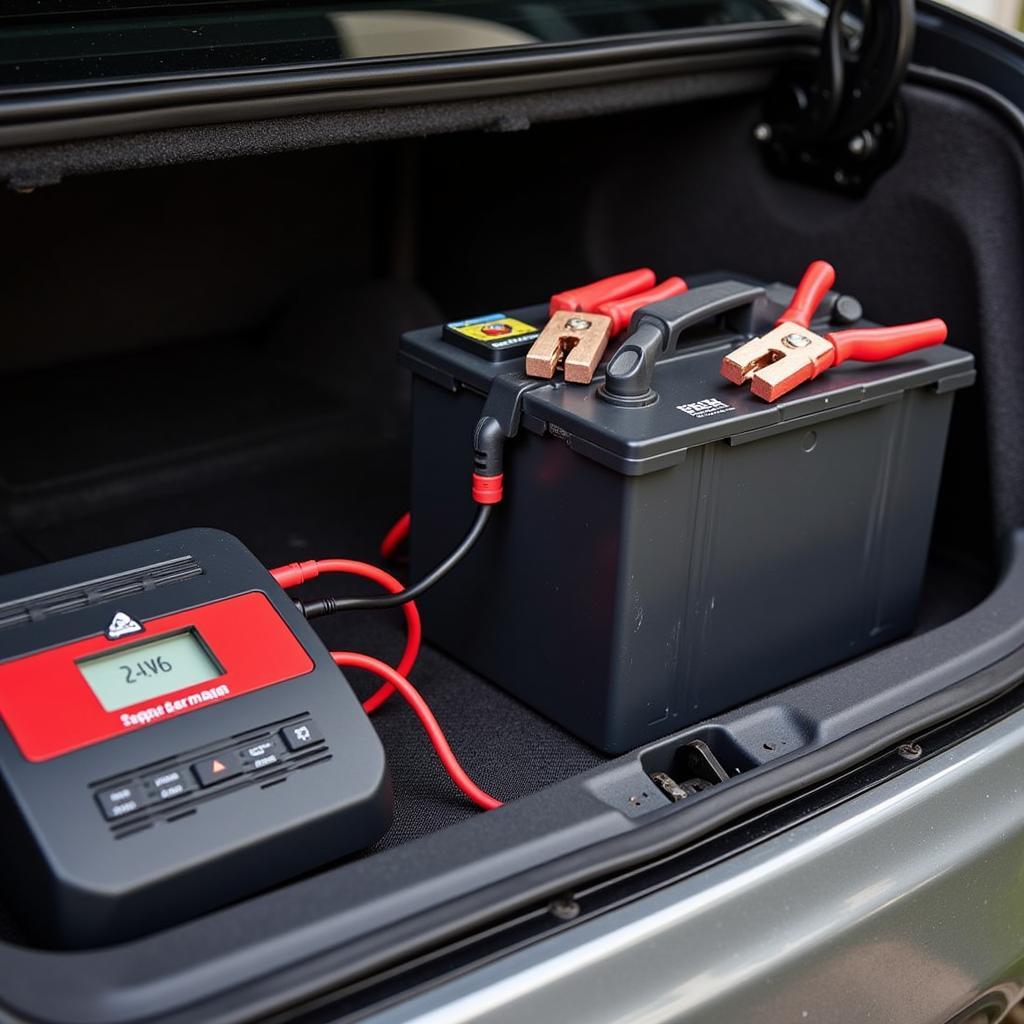The brake oil warning light, often depicted as a circle with parentheses and an exclamation mark, is a crucial indicator of your car’s braking system health. Ignoring this warning could lead to costly repairs and, more importantly, compromise your safety on the road. This article guides you through the common causes of a brake oil warning light, potential solutions, and when professional help is necessary.
Understanding Your Car’s Brake Fluid System
Before delving into the causes of a lit brake oil warning light, it’s essential to understand the fundamentals of your car’s brake fluid system.
The system primarily consists of:
- Brake Fluid Reservoir: This container holds the brake fluid and is usually located under the hood.
- Master Cylinder: When you press the brake pedal, this component pressurizes the brake fluid.
- Brake Lines: These metal tubes carry the pressurized fluid from the master cylinder to the wheels.
- Brake Calipers & Wheel Cylinders: These components, located at each wheel, use the pressurized fluid to engage the brake pads or shoes, slowing or stopping the vehicle.
Common Causes of a Brake Oil Warning Light
The brake oil warning light typically illuminates for two primary reasons:
1. Low Brake Fluid Level
Why it happens: Brake fluid levels can decrease due to:
- Worn Brake Pads: As brake pads wear down, the brake calipers need more fluid to function correctly, leading to a lower fluid level in the reservoir.
- Brake Fluid Leak: A leak anywhere in the system, from the reservoir to the brake lines, can result in a significant drop in brake fluid.
What to do:
- Check the Brake Fluid Level: Park your car on a level surface and locate the brake fluid reservoir under the hood.
- Add Brake Fluid (If Necessary): If the fluid level is low, carefully add the recommended brake fluid type for your car until it reaches the “Max” line.
- Inspect for Leaks: If you notice a persistent drop in brake fluid levels, it indicates a leak that requires immediate professional attention.
 Checking Brake Fluid Level
Checking Brake Fluid Level
2. Brake System Malfunction
Why it happens:
- Worn Brake Lines or Hoses: Over time, brake lines and hoses can deteriorate, leading to leaks and reduced braking efficiency.
- Faulty Master Cylinder: A malfunctioning master cylinder may not pressurize the brake fluid adequately, triggering the warning light.
- ABS Issues: Problems within the Anti-lock Braking System (ABS), such as a faulty sensor, can also trigger the brake oil warning light.
What to do:
Addressing brake system malfunctions requires specialized knowledge and tools. It’s crucial to consult a qualified mechanic immediately if:
- The brake pedal feels spongy or goes to the floor.
- You hear unusual noises (grinding or squealing) while braking.
- Your car pulls to one side when braking.
- The brake oil warning light remains on even after adding fluid.
The Importance of Regular Brake Inspections
Prevention is key when it comes to maintaining a safe and reliable braking system. Regular brake inspections, typically recommended every 12,000 miles or annually, can help identify potential issues before they escalate into major problems.
brake cooling oil pressure high volvo articulated truck warning lights provide a more specialized look at brake issues in heavy-duty vehicles.
During a brake inspection, a mechanic will:
- Check the brake fluid level and condition.
- Inspect the brake pads and rotors for wear and tear.
- Examine the brake lines and hoses for leaks or damage.
- Test the functionality of the master cylinder and ABS system.
Can I Still Drive With the Brake Oil Warning Light On?
While it might be tempting to continue driving with the brake oil warning light illuminated, it’s crucial to understand the risks involved. Driving with low brake fluid or a malfunctioning brake system severely compromises your ability to stop the vehicle safely, potentially leading to accidents.
If the warning light comes on, it’s essential to:
- Pull over safely to the side of the road.
- Assess the situation. If you suspect a leak or malfunction, do not attempt to drive further.
- Call a tow truck to transport your vehicle to a trusted mechanic for diagnosis and repair.
Brake Oil Warning Light: Don’t Ignore the Warning
oil pressure warning sign on when brake may indicate a serious issue, and ignoring it can have dire consequences. Your car’s braking system is critical for your safety and the safety of others on the road. By understanding the causes of a brake oil warning light, knowing when to seek professional help, and adhering to a regular maintenance schedule, you can ensure optimal braking performance and peace of mind behind the wheel.
FAQs About Brake Oil Warning Lights
1. What type of brake fluid does my car need?
Consult your car’s owner’s manual for the recommended brake fluid type and specifications.
2. Can I top up the brake fluid myself?
Yes, you can add brake fluid if the level is low. However, ensure you use the correct type and don’t overfill the reservoir.
3. How often should I replace my brake fluid?
Brake fluid should be flushed and replaced every 2 years or 24,000 miles, even if the level seems fine.
4. Why is my brake oil warning light flashing?
A flashing brake oil warning light typically indicates a more serious problem, often related to the ABS system. Seek immediate professional help.
5. Can I drive a short distance with the brake oil warning light on?
It’s highly discouraged to drive with the brake oil warning light on. Even a short distance poses significant safety risks.
Remember, your car’s brake oil warning light is a serious safety alert. Ignoring it can lead to costly repairs and, most importantly, compromise your safety and the safety of others on the road.


